The accelerating inbound business. This series features experts and Dentsu Inc.'s "Inbound Business Team" exploring the current landscape from multiple angles and introducing hints for solutions. For the second installment, we feature Hiroyuki Fushitani, CEO of Time Out Tokyo. Time Out is a city guide operating in 108 cities across 39 countries, primarily centered in London, combining global and local perspectives. Fushitani, who recognized the potential of media specifically targeting foreign visitors to Japan early on and launched Time Out Tokyo in 2009, shares his insights on today's inbound landscape and the effective use of Time Out.
The city guide culture cultivated over 40 years in London
unlocking new appeal in Japan
Uchida: From our perspective, Time Out, with its global network, is truly unique as a media outlet dedicated to inbound tourism. While there are tools, promotional coupon books, and guidebook-like materials, it's hard to find other high-quality media that people actually keep. We feel it also serves as an archival asset, a database of the city.
Fushitani: What makes Time Out unique is that it started not as a travel guide, but as a locally rooted city guide. It was first published in London in 1968. This was an era when the Beatles got into psychedelia and then released what became known as the "White Album," followed by the emergence of King Crimson and Pink Floyd – a time when a whole new generation of music and art burst onto the scene. Time Out was born to communicate that. Its style—where local "connoisseurs" introduce the culture of cities like London, Paris, and New York—fits Tokyo perfectly.
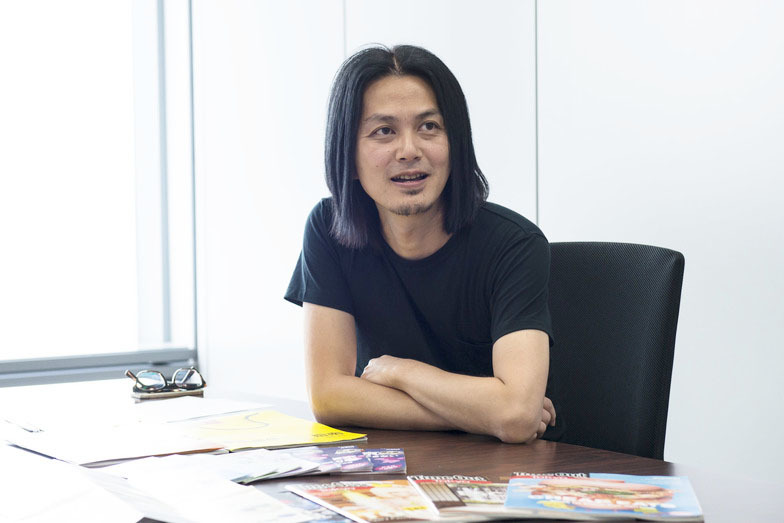
Hiroyuki Fushitani
Uchida: Foreign visitors get incredibly excited about Tokyo's culture, right? I feel it's crucial to have a higher-level perspective—not just viewing inbound tourism as a business, but actively promoting Japan's strengths.
Fushitani: Time Out simply wouldn't work in a place with immature culture. In that sense, Tokyo has more culture than we could ever cover. While staying true to Time Out's unique perspective, we focus on discoveries like, "If you turn down just one side street, you'll find this," and introduce restaurants not through authoritative ratings like Michelin, but through approaches that spark discussion. There might be an influence from British critical culture. We believe bringing the city guide culture nurtured in London can draw out new charms in Tokyo.
Takahashi: It's completely different from what you'd call a review site.
Fushitani: The ultimate guide is like having a friend who knows music incredibly well. You listen to their recommendations, and before you know it, you've reached an amazing level. Or, the experience itself only happened because that guide was there. Like when Uchida-san was taken to see the Talking Heads movie in middle school, and five years later, someone says, "Wait, you saw that as a kid? That's insane!" (laughs). When a great guide thoroughly explores and introduces a city, more people come, enriching it culturally and economically. As a result, the city's value itself—including the land—rises. We're most passionate about the richness of playing or living in a city with such a great guide.
Uchida: The editing feels incredibly professional. In London, it was paid until recently, right?
Fushitani: London was originally famous as a fierce battleground for free papers, with tons of them in the subway. Time Out prided itself on being one people would actually pay for, not just toss two stops later. When it went free two years ago, we watched to see what would happen. Well, Time Out going free meant most other free papers basically vanished. Now, our distribution in London is approaching 500,000 copies. Even at conventions, free items often get discarded, but Time Out is a "free magazine that isn't discarded." I believe that's incredibly important, both as a medium for corporate advertising and for communicating brand philosophy.
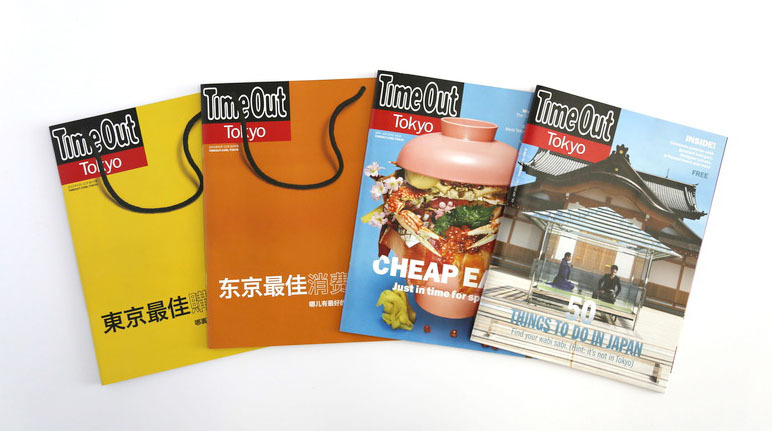
Time Out Tokyo. On June 30th, the first Chinese edition (Traditional and Simplified characters) was published.
Takahashi: How many copies are distributed in Tokyo?
Fushitani: About 400 locations. Narita Airport, Haneda Airport, Tokyo Metro and Toei Subway stations. We also cover nearly all major hotels, including placement in every guest room at the Mandarin Oriental and Grand Hyatt. Recently, we've even been spotted in photos of rooms listed on Airbnb. It's incredibly gratifying to see it used like that. Also, we actually get quite a few orders from overseas. It costs about 1,000 yen, but we ship them if they cover the postage.
Uchida: Even so, when Mr. Fushitani launched the Tokyo edition of Time Out back in 2009, the term "inbound" wasn't widely used yet, right? He had an eye for trends.
Fushitani: Maybe a bit too early (laughs). But starting around 2008, there was a movement, led by the government, to revitalize Japan's economy—which had been slumping since the bubble burst—by positioning Japan as a "content superpower" and a "tourism-based nation." I brought Time Out here because I believed it was exactly the media needed to constantly share information about Japan's great things overseas, turning people into fans of Japan and encouraging them to visit. But when I actually tried to raise funds, the Lehman Shock hit, and foreigners completely vanished from Tokyo.
Takahashi: And then the earthquake hit in 2011.
Fushitani: We really struggled at first. Still, shortly after launching, the Ministry of Economy, Trade and Industry told us that when they researched local media to promote overseas product fairs, Time Out almost always came up at the top. They said they'd been wondering how to connect with us. So, the Small and Medium Enterprise Agency and the National Federation of Small Business Associations collaborated to use Time Out for promoting local products. They brought in an editorial team from New York and London, letting them freely cover Hokuriku and Northern Kyushu for articles. The response was significant. Kyushu pottery proved popular, especially for everyday dining, leading to comments like "I want to buy more, but there's no e-commerce for it." It gave us a tremendously real sense of the potential for promoting Japanese goods overseas. We became convinced that deploying a global media outlet like Time Out to Japan's regions could enable unprecedented information dissemination.
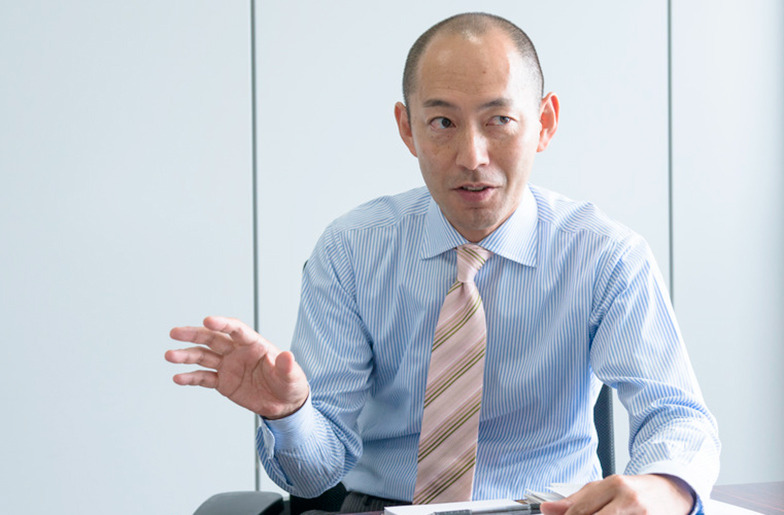
Masayoshi Uchida
Truly great things deserve to be shared with the world
Uchida: Let me ask again—what exactly is "Time Out-like"?
Fushitani: When we launched the Tokyo edition, we considered what our mission should be. Truly great things can be shared with the world and will be understood. Based on the premise that such values exist globally, our role is to serve as a guide, conveying things with genuinely interesting stories behind them. For example, someone from Suntory mentioned that authentic bar culture actually only exists in Japan now. It's a culture imported from abroad, but the culture of taking time to savor the taste and aroma of a single glass, of spending time leisurely – that only exists here. Living in Japan daily, you might not notice it, but to foreign eyes, it's amazing how overseas cultures are refined and sustained here. I believe there's a real need for media that properly captures that fascination and beauty and delivers it to foreigners.
Takahashi: The target audience isn't the masses, but rather a culturally sophisticated, upper-middle class demographic. As inbound tourism matures, I think it becomes crucial to move beyond broadly categorizing foreigners by nationality and instead focus on segments that consider lifestyle and values.
Fushitani: Our readers who read Time Out are a vital asset. Time Out is a brand that has endured for over 40 years. Brands like this, even when they spread globally, tend to attract people with similar profiles. It's only natural – if the brand message wasn't effectively conveyed, it wouldn't have survived for 40 years. Right now, it's like a gold rush with everyone jumping into the inbound business, but they often vaguely say things like "We just want to attract foreigners, we want foreigners to buy from us." Even with Chinese tourists, the image of them going on tour and going on a shopping spree, as seen on TV, seems to dominate. But people who read Time Out, even if they're Chinese, often speak English well, and when they come to Japan, they're naturally FIT (individual travelers).

Kuniyuki Takahashi
Takahashi: It's predicted that Asia will definitely shift towards FIT travel. We should adopt the obvious approach of segmented marketing for inbound tourism too.
Fushitani: For those creating content, it's not just about targeting any foreigner. Time Out editors have a high cultural literacy and are well-trained. We hold international conferences where editors from around the world gather, and through daily global communication, we achieve editing that's both foreigner-focused and professional.
Takahashi: We're really feeling the positive response to the Chinese edition launched in June.
Fushitani: This is the first time a Chinese edition has been published outside the Chinese-speaking world. We offer both Traditional and Simplified Chinese versions and are actively distributing them locally. We plan to continue strengthening our global collaboration.
Creating systems and experiences, not just selling products
Fushitani: A recent memorable example is Kakimori, a stationery shop in Kuramae where you can order custom notebooks and ink. You select paper, hardware, and other components, and they assemble it right there. They did a pop-up shop in Taipei in April, featured in Time Out, and it exploded in popularity. Suddenly, young Taiwanese travelers started flocking to this small shop in Kuramae. The appeal for them is huge – it's Japan-exclusive, and you can customize it. Japanese quality is highly respected, especially in Asia. But what's packed with Cool Japan and Visit Japan insights isn't just the products themselves, but the experience they provide.
Uchida: For future inbound tourism, I think it's crucial to go beyond just selling products and instead create business models and experiences themselves. Time Out gets inquiries like Tokyu Corporation wanting to develop neighborhoods that attract foreigners, or Isetan Shinjuku wanting to promote the Shinjuku area itself through collaboration with the local community. BEAMS distributes Harajuku maps in Taiwan to convey their worldview.
Fushitani: I hope we can contribute, even a little, to raising Tokyo's value, raising Japan's value, and ultimately benefiting everyone. For example, Time Out Lisbon redeveloped a market that had been around for over 100 years, turning it into a hugely popular tourist spot where you can experience Lisbon's current food scene. Renovating the city itself and producing tourist resources is also one of Time Out's roles as a guide. We want to take on various initiatives and share them.
Uchida: Inbound and outbound tourism are interconnected. When positive information about Japan circulates globally, it creates a cycle of consumption that transcends borders. Time Out is the guide that helps achieve that.
Takahashi: Time Out's maps also get a lot of attention. Things like Suginami Ward's "50 Things Only You Can Do in Koenji" offer a unique perspective that feels fresh.
Fushitani: The cover features an ordinary side street scene. Initially, they suggested using the annual Awa Odori festival as the cover. But since it's a map meant for year-round use, I encouraged them to highlight the city's appeal through attractions accessible 365 days a year. Isn't the charm of Suginami precisely that it has so many such side streets?
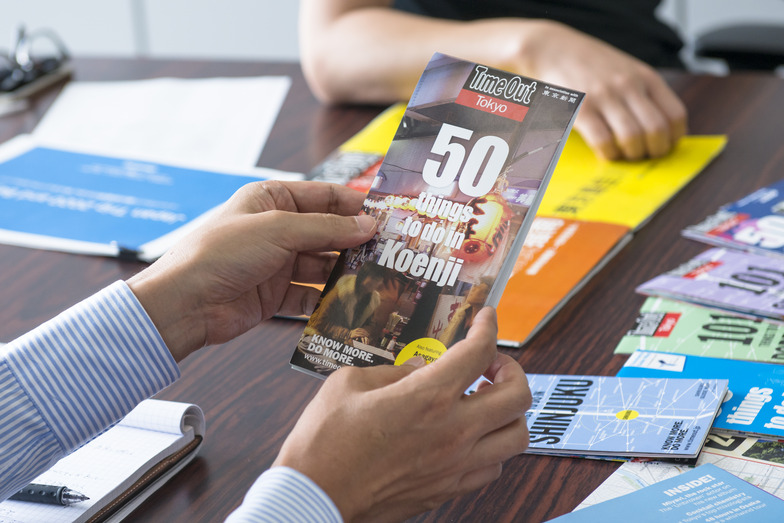
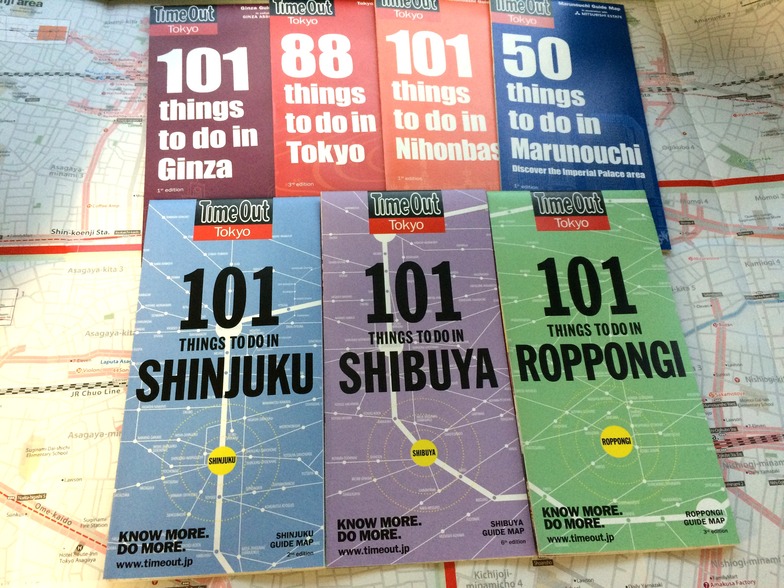
Time Out Tokyo's guide map series for enjoying exploration and discovery in the city
Uchida: It's appealing to be able to create something like this together. As an aside, even cool Japanese culture magazines are starting to adopt Time Out's approach (laughs). Stepping back from Japanese assumptions, taking a bird's-eye view, and presenting things in lists like "101" or "50."
Takahashi: "50 Things Only You Can Do in Yokohama" is interesting too. Even though it's Time Out Tokyo.
Fushitani: This year marks the first year of regional revitalization. We're getting more inquiries from regional areas. But the idea that you can just bring something from Japan that's not well-known overseas and immediately get a "Wow!" reaction is still just a fantasy. It requires a certain scale of investment. Using the popular "Tokyo" brand as a gateway for foreigners to discover regional areas is one approach. We'll continue to feature regional areas more, but we'll always introduce them as Time Out Tokyo.
Takahashi: Even so, there still seems to be a disconnect: the government is working hard to promote regional areas, yet the regions themselves often lack the infrastructure to properly welcome visitors.
Fushitani: That's a real challenge. I heard from JTB Chairman Tagawa at an inbound tourism symposium that Japan's willingness to welcome foreign tourists is significantly lower than overseas. Take the case of the Shirakawa area in Fukushima Prefecture we worked with. At first, the locals said they had nothing to boast about globally. But then someone casually mentioned, "You can't do this in Tokyo, but in Shirakawa, you can have a bonfire." Then someone else said, "The starry sky you see in Shirakawa is completely different from Tokyo's and truly beautiful." Having a bonfire and seeing a starry sky you can't see in Tokyo – isn't that the best? Even when introducing a Shirakawa ramen shop, the Time Out editor featured one where people line up along a rice field embankment. That revealed a different kind of charm, and people started going, thinking, "I want to experience lining up while looking at the rice fields." I think that as confidence builds like this, the feeling of "Come on over, there's something fun happening here" gradually grows stronger. I hope they'll keep using Time Out's approach of finding these "This experience is great!" or "This is interesting!" moments right out of everyday life to keep sharing the appeal of regional areas.
Uchida: Japan as a whole is undergoing major changes leading up to 2020.
Fushitani: Visitors drawn by the Olympics must become repeat visitors. How we convey a city's charm is crucial. If Tokyo's last Olympics were about proving, "We've worked hard to become a city that can host the Olympics!", this time it's about presenting as a mature nation standing among the world's best, saying, "Hey, folks, this is the kind of era we're entering now." For the London Olympics, Time Out London handled the official travel guide. One I particularly liked was the "Open London Guide: Olympic Edition." It provided complete barrier-free information from the airport to the city. I hope Time Out Tokyo can implement similar initiatives effectively.
Takahashi: It would be great if people from all over the world visited Tokyo in 2020, carrying a Time Out guide as they explored the city. Thank you for today.








 Time Out Tokyo's guide map series for enjoying exploration and discovery in the city
Time Out Tokyo's guide map series for enjoying exploration and discovery in the city